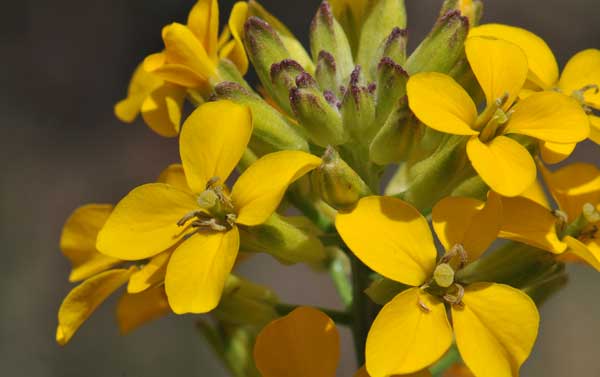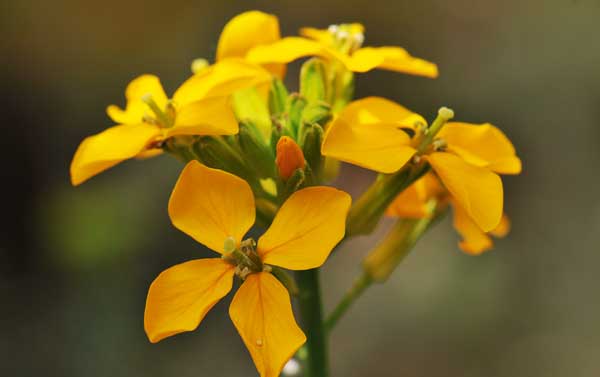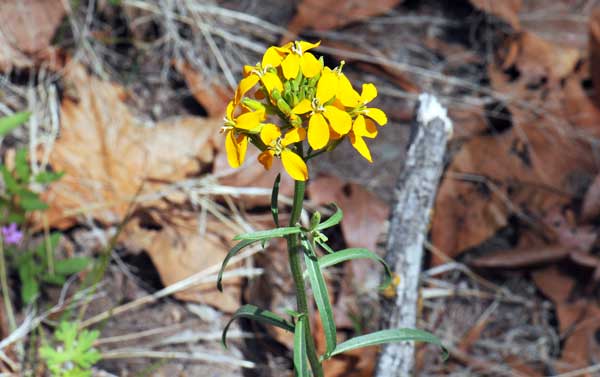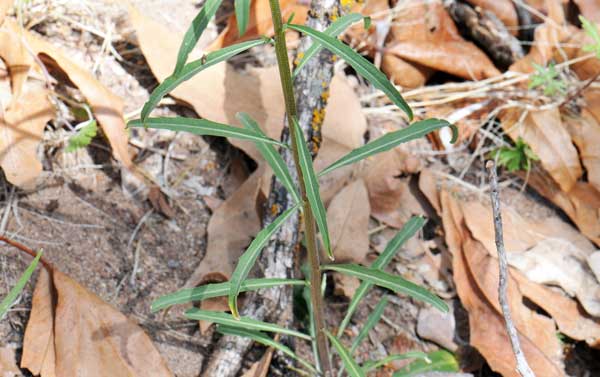Erysimum capitatum, Western Wallflower




Scientific Name: Erysimum capitatum
Common Name: Western Wallflower
Also Called: Coast Wallflower, Sanddune Wallflower, Sand-dune Wallflower, Wallflower
Family: Brassicaceae or Cruciferae, Mustard Family
Synonyms: ()
Status: Native
Duration: Biennial or short lived perennial.
Size: Up 2 feet or more.
Growth Form: Forb/herb, subshrub; erect, variable, single stem or multiples.
Leaves: Green; basal and stem; basal leaves dried during bloom, stem leaves linear, lanceolate, sessile, margins entire or slightly toothed, hairy pubescence.
Flower Color: Bright yellow but variable, also orange or red; flowers about an inch wide, flowers clusters dense on terminal tip of stem, fruit ascending or erect.
Flowering Season: March to September in Arizona; later in cooler climates.
Elevation: 2,500 to 9,500 feet.
Habitat Preferences: Variable of habitats and soil conditions.
Recorded Range: Throughout western and central United States and Alaska.
North America & US County Distribution Map for Erysimum capitatum.
U.S. Weed Information: No data available.
Invasive/Noxious Weed Information: No data available.
Wetland Indicator: No data available.
Threatened/Endangered Information: No data available.
Erysimum capitatum var. capitatum, Sanddune Wallflower; and
Erysimum capitatum var. purshii, Pursh's Wallflower.
Comments: Western Wallflower is a showy bright yellow plant found at higher elevations in Arizona, usually above 2,500. Because of its showiness and ability to withstand minor droughts it is often used as a landscape specimen in desert habitats and flower gardens.
Several ethno-botanical uses have been identified for Western Wallflower including its use as a poultice and applied to fresh wounds and an infusion of crushed seed were used externally for stomach or bowl cramps. See the species account from Native American Ethnobotany, University of Michigan, Dearborn.

